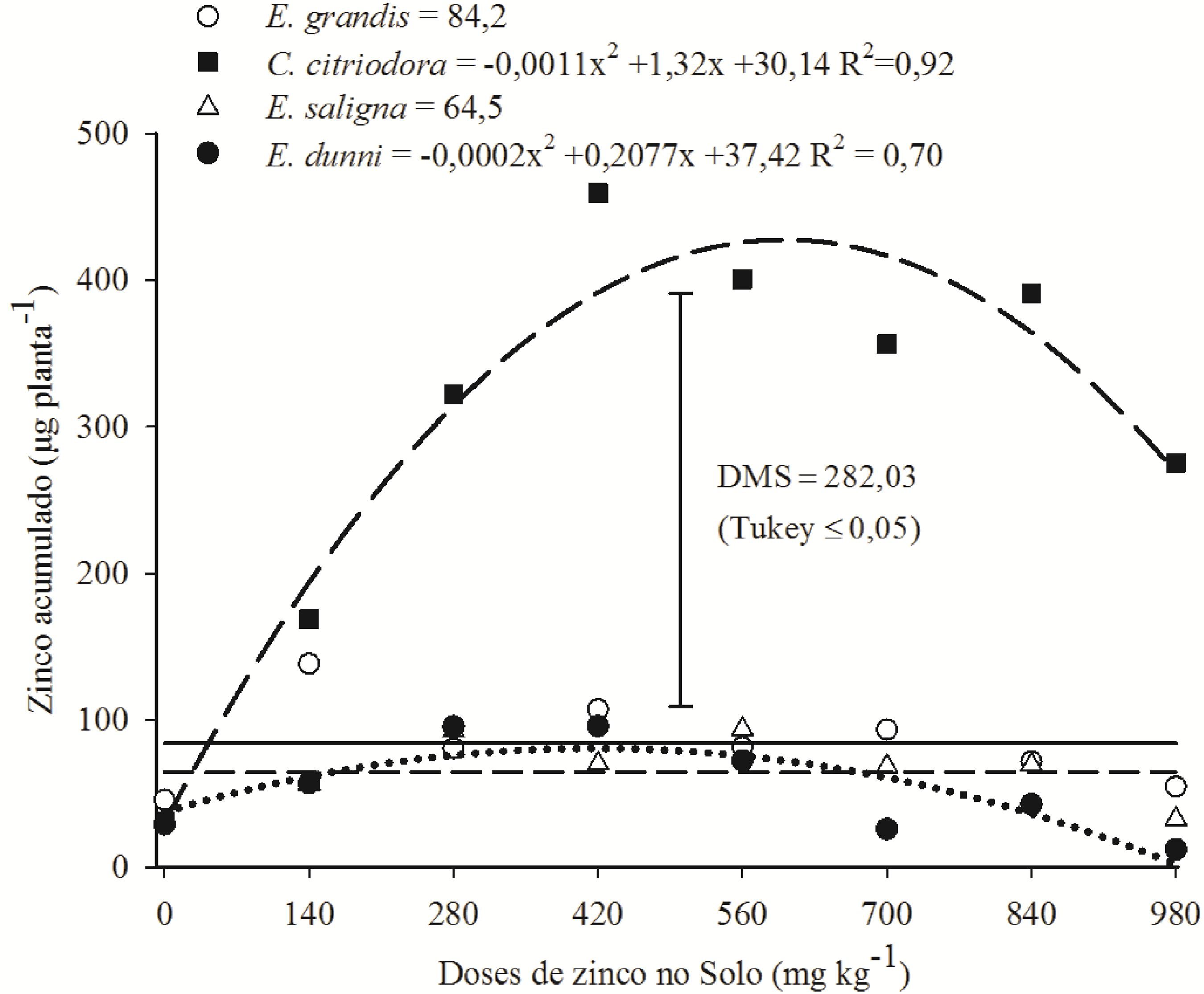ABSTRACT
The zinc accumulation and compartmentalization are distinct among forest species. The objective of this study was to evaluate the ability of zinc accumulation and translocation in seedlings of Eucalyptus and Corymbia in soil contaminated with zinc. The experiment was conducted during October 2011 and March 2012, in a greenhouse, in a completely randomized design, in factorial arrangement (4 x 8), with 12 replicates. Four species were used: Eucalyptus. grandis W. Hill ex Maid., Eucalyptus. saligna Smith, Eucalyptus. dunnii Maiden and Corymbia citriodora (Hook.) K.D. Hill & L.A.S. Johnson, and eight doses (0, 140, 280, 420, 560, 700, 840 and 980 mg of Zn kg-1 of soil). The seedlings of forest species showed different behavior relative to zinc doses applied in the soil, reducing the dry mass of aerial parts. The E. dunnii presents higher reduction in plant height, root volume, leaf area and root dry mass than other species. The C. citriodora has higher zinc accumulation in aerial parts as well as translocation index, and has low coefficient of impact of relative content with doses applied on the soil, indicating tolerance in contaminated soils.
Key words:
eucalyptus; contaminated soil; heavy metal; zinc absorption


